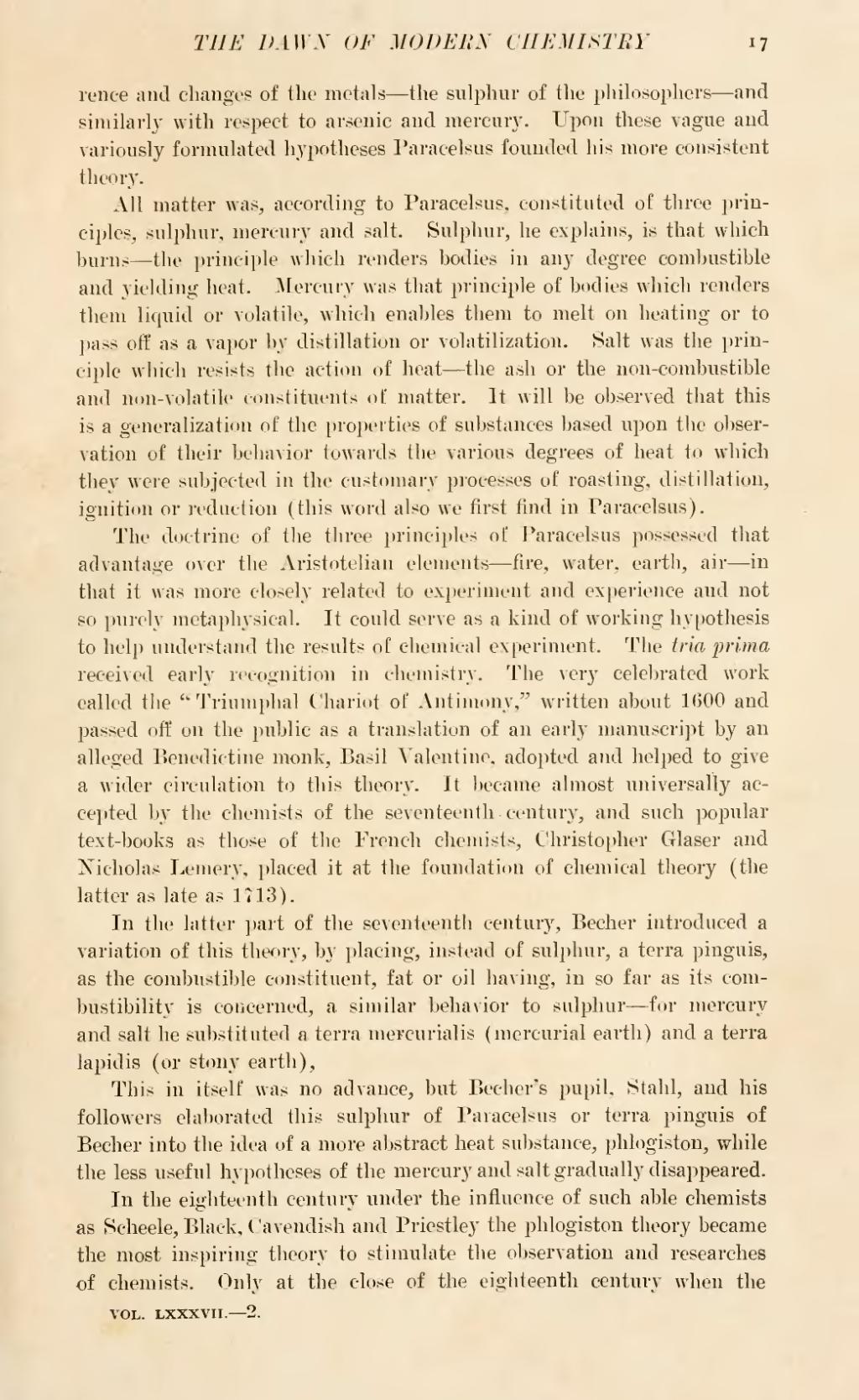rence and changes of the metals—the sulphur of the philosophers—and similarly with respect to arsenic and mercury. Upon these vague and variously formulated hypotheses Paracelsus founded his more consistent theory.
All matter was, according to Paracelsus, constituted of three principles, sulphur, mercury and salt. Sulphur, he explains, is that which burns—the principle which renders bodies in any degree combustible and yielding heat. Mercury was that principle of bodies which renders them liquid or volatile, which enables them to melt on heating or to pass off as a vapor by distillation or volatilization. Salt was the principle which resists the action of heat—the ash or the non-combustible and non-volatile constituents of matter. It will be observed that this is a generalization of the properties of substances based upon the observation of their behavior towards the various degrees of heat to which they were subjected in the customary processes of roasting, distillation, ignition or reduction (this word also we first find in Paracelsus).
The doctrine of the three principles of Paracelsus possessed that advantage over the Aristotelian elements—fire, water, earth, air—in that it was more closely related to experiment and experience and not so purely metaphysical. It could serve as a kind of working hypothesis to help understand the results of chemical experiment. The tria prima received early recognition in chemistry. The very celebrated work called the "Triumphal Chariot of Antimony." written about 1600 and passed off on the public as a translation of an early manuscript by an alleged Benedictine monk, Basil Valentine, adopted and helped to give a wider circulation to this theory. It became almost universally accepted by the chemists of the seventeenth century, and such popular text-books as those of the French chemists, Christopher Glaser and Nicholas Lemery, placed it at the foundation of chemical theory (the latter as late as 1713).
In the latter part of the seventeenth century, Becher introduced a variation of this theory, by placing, instead of sulphur, a terra pinguis, as the combustible constituent, fat or oil having, in so far as its combustibility is concerned, a similar behavior to sulphur—for mercury and salt he substituted a terra mercurialis (mercurial earth) and a terra lapidis (or stony earth),
This in itself was no advance, but Becher's pupil, Stahl, and his followers elaborated this sulphur of Paracelsus or terra pinguis of Becher into the idea of a more abstract heat substance, phlogiston, while the less useful hypotheses of the mercury and salt gradually disappeared.
In the eighteenth century under the influence of such able chemists as Scheele, Black, Cavendish and Priestley the phlogiston theory became the most inspiring theory to stimulate the observation and researches of chemists. Only at the close of the eighteenth century when the
